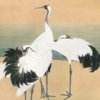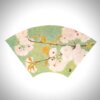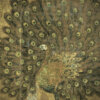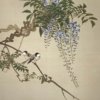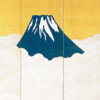What is Nanga? (2/2)
Meiji Period: Crisis of Nanga
In the Meiji era (1868-1912), when Western culture began to enter the country, there was a tendency for Japan’s traditional culture to be devalued.
In addition, painters who had previously been employed by the shogunate and clan system were forced to change their jobs to make a living, as they no longer had patrons under the Meiji Government.
Furthermore, the movement to abolish Buddhism took place, which severely damaged Buddhist art in Japan.
Ernest Fenollosa and Okakura Tenshin rose up to break through this critical situation in Japanese art and to seek a new way of Japanese painting.
The position of Nanga deteriorated dramatically when Ernest Fenollosa criticised it heavily in his famous lecture, ‘Bijutsu Shinsetsu’ (The True Theory of Art), in which he explained the new Japanese style of painting.
The impact was particularly severe in urban areas such as Tokyo, and the situation was so serious that some Nanga artists retreated to the countryside, where they were less affected.
However, the popularity of Nanga in the countryside was strong and there was a certain demand for it, so Nanga did not become extinct, but survived.
Taishō Period: New Nanga
The next turning point in Nanga came around the Taishō (1912-1926) period.
By this time, the influence of the acceptance of Western painting had subsided in the central art world, and based on this, there was a search for a new form of Japanese painting that took another step forward.
In this context, a re-evaluation of the importance of spirituality to the Nanga paintings occurred.
The new style of Nanga, known as ‘new Nanga’, was born, incorporating a variety of new drawing techniques and sensibilities into the Nanga of the past.
There is no clear definition of this ‘new Nanga’ style, but rather a rough definition of Nanga that is somewhat different from the old Nanga and contains new elements.
This is a brief introduction to the basics of Nanga and a rough history of Nanga up to the new Nanga.

